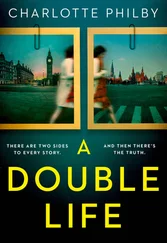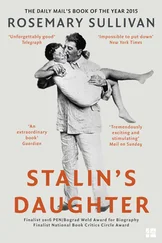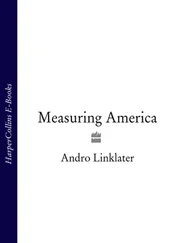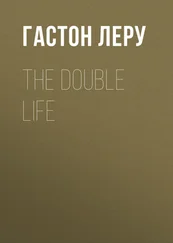News of his deteriorating health brought Celestine to Mexico City shortly before Christmas. Nothing more could be done for him except to keep the pain at bay with laudanum. On December 28, 1825, at the age of sixty- eight, Major General James Wilkinson, once commander in chief of the U.S. army, and sometimes known as Agent 13, died.
He would have been gratified to learn that a distinguished congregation, including the future president Cordero y Bustamante and the American ambassador, assembled in the Church of St. Michael in Mexico City for his funeral. Outward appearances were always important. The inward reality was less easy to discern, and for the general it never counted for much. Thus the final disposal of his mortal remains was oddly appropriate.
In 1872 the cemetery of the Church of St. Michael where Wilkinson was buried was scheduled for development. When the news reached Washington, the Senate decided that the body of such a distinguished soldier deserved a proper resting place. Orders were given to exhume his body for transfer to the National Cemetery in Mexico City. The embassy sent an official party to supervise the ceremony with due honor. When they arrived, however, they discovered the graves had already been dug up and their contents consigned to a common vault. American bones were mixed with Mexican, and it was no longer possible to tell one from the other, friend from enemy, patriot from traitor, general from spy. Whoever was behind the outward appearance once known as James Wilkinson had simply disappeared.
ACKNOWLEDGMENTS
The centripetal process of conception, research, and writing that results in a book incurs many debts to the generosity and knowledge of others. I should like to acknowledge my gratitude to Frank Wilson, former books editor of the Philadelphia Inquirer , for initially focusing my attention on the bizarre nature of General James Wilkinson’s double-faced career, and to my friend George Gibson, publishing director of Bloomsbury USA/Walker Books, for his encouraging response to my enthusiasm for the dark convolutions of the general’s character.
My research has depended heavily on the professional expertise of librarians in the Manuscripts Division of the Library of Congress, the New York Public Library, the Chicago History Museum, the American Philosophical Society, the United States Military Academy Library at West Point, the Archivo General de Indias in Seville, the British Library in London, and the London Library. At one remove, I have also benefited from the resources, both human and online, of the Filson Historical Society, the Maryland Historical Society, the Maryland State Archives, the Massachusetts Historical Society, the State Historical Society of Missouri, and the Texas State Historical Society. The ability to access online original manuscripts and publications from the period is invaluable, and so at two removes, I should like to pay tribute to the many organizations that have digitized their records and made them available to researchers.
The outward expression of this inward absorption is my own responsibility, but for their deeply valued contributions to the churning of ideas, I would like to thank Paul Houlton, Alan Smith, Lyn Cole, Professor Tom Schmiedeler, and Philip Evans. Finally, but primarily, for the love and support of my wife, Marie-Louise, throughout the entire autogamic process I am eternally grateful.
APPENDIX 1
AGENT 13’S ACCOUNT
The real record of payments made to James Wilkinson was kept by his Spanish handlers. As printed by Jacobs in Tarnished Warrior , it reads as follows:
STATEMENT OF WILKINSON’S ACCOUNT
Pension from 1st January 89 to 1st January 96
14000
to so much advanced by advice of Carondelet & Gayoso to
retard, disjoint and defeat the mediated irruption of
General Clark in La.
8640
Credit
22640
Received from Miró
7000
Received from Carondelet by La Cassagne
4000
Received from Carondelet by Collins
6000
17000
Of the taken credited
L[a] C[assagne] has paid
2600
Collins has paid
2500
the balance is disipated [sic] or fraudently applyd [sic]
A true account upon honour W.
Ingeniously, Jacobs points out that the difference between what Wilkinson was due and what he had been paid was $5,640. Jacobs argues that when Carondelet sent Power north with $9,640, it was to pay Wilkinson the difference plus $4,000 representing two years’ unpaid salary.
APPENDIX 2
JAMES WILKINSON’S CODE
In 1929, Lieutenant Mark Rhoads of the U.S. Army’s Signal Corps, and soon to be the first instructor employed by the army’s cryptanalysis training section, the Signal Intelligence School, undertook to analyze the ciphers used by James Wilkinson. He started with ciphered messages sent to New Orleans, most of which were already decoded, and worked back to find out what ciphering method had been used. Rhoads learned that, in addition to the basic cipher based on dictionaries, Wilkinson added complications of his own— substitution codes, doubled ciphering, and arbitrary transposition of symbols and letters. His notes are preserved in the Library of Congress files.
A code refers to the substitution of specific words in the original plain text with an arbitrary and predetermined set of words or symbols—e.g., the president was represented by O, the vice president by  . A cipher refers to the substitution of the plain text with words, numerals, or other symbols selected according to a predetermined rule. A code is necessarily limited to the previously selected words. A cipher is as elastic as an alphabet.
. A cipher refers to the substitution of the plain text with words, numerals, or other symbols selected according to a predetermined rule. A code is necessarily limited to the previously selected words. A cipher is as elastic as an alphabet.
Wilkinson’s most commonly used code was based on the 1800 edition of John Entick’s The New Spelling Dictionary . The coded text appeared as numbers separated by a decimal point. The digits up to the decimal point indicated the page of the dictionary; the digits after the point indicated the number of the word on the page; e.g., 261.37 stood for page 261, word on line 37; thus “able” = 2.18; “yourself” =  . (Since there were two columns on each page of Entick’s dictionary, the second column was indicated by two lines over the first digit after the decimal point; no marking meant the first column.)
. (Since there were two columns on each page of Entick’s dictionary, the second column was indicated by two lines over the first digit after the decimal point; no marking meant the first column.)
This code was relatively easy to compose; Wilkinson’s reports were long and chatty, spread over up to thirty pages, suggesting that he could easily remember the code for most words. It was also relatively simple to decode. As Rhoads himself pointed out, a quick study of the coded text revealed the maximum number of pages in the book, and the maximum number of lines. From this, it would have been possible to deduce the volume being used, a task made easier by the supposition that the likeliest choice was a dictionary or encyclopedia that had all the words needed. Accordingly Wilkinson also used substitution ciphers based on a keyword such as CUBA. This also produced a ciphered text in digits, following the rules below:

This required each letter to be ciphered in relation to the keyword. The first letter was taken from the first column, second from the second, and for a word of more than four letters, the substitution continued with the fifth letter from the first column, etc. Each letter was separated by a comma, each word by a period. Thus “bare” would be 26, 7, 18, 5. The keyword could be changed according to a predetermined order from paragraph to paragraph. Wilkinson’s preference for ornate, polysyllabic words led him to select long keywords such as NORTHUMBERLANDSHIRE.
Читать дальше

 . A cipher refers to the substitution of the plain text with words, numerals, or other symbols selected according to a predetermined rule. A code is necessarily limited to the previously selected words. A cipher is as elastic as an alphabet.
. A cipher refers to the substitution of the plain text with words, numerals, or other symbols selected according to a predetermined rule. A code is necessarily limited to the previously selected words. A cipher is as elastic as an alphabet. . (Since there were two columns on each page of Entick’s dictionary, the second column was indicated by two lines over the first digit after the decimal point; no marking meant the first column.)
. (Since there were two columns on each page of Entick’s dictionary, the second column was indicated by two lines over the first digit after the decimal point; no marking meant the first column.)











